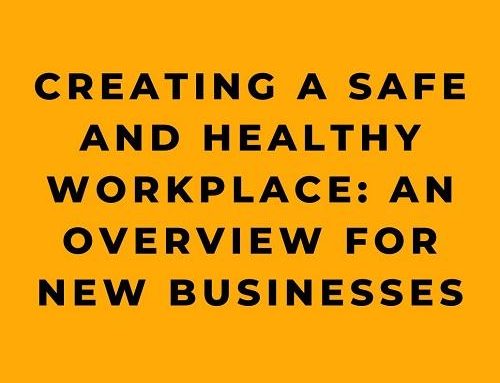Introduction
Workplace safety is the lifeblood of any organization, serving as a cornerstone for employee well-being and seamless business operation. However, complacency—a silent adversary—can undermine this safety, leading to accidents and inefficiencies. Consider the situation at a facility that was so compliant with safety standards it was used by OSHA as a model for new inspectors, a site frequently inspected and highly regarded as the epitome of safety. The employees at this site couldn’t have felt safer. Yet, against all odds, there was a fatal accident1.
Complacency, which often stems from an inaccurate perception of risk, was a significant contributor to this incident. The more employees perform a task without adverse effects, the more they assume they can continue doing it without consequence. This false sense of security was exacerbated by a belief that rules and regulations formed an infallible safety net, thus causing the employees to underestimate the actual risk involved.
This incident underlines the fact that organizations can also become complacent, potentially eroding standard safety procedures. If someone fails to properly install a guard rail or wear their fall protection, for example, the level of risk for workers dramatically increases, regardless of whether an OSHA inspector is present or not.
This tragic event underscores the dangers of complacency, emphasizing the need to address this issue in workplace safety. In this article, we delve into the nature of complacency, its impact, and practical strategies to counter it, fostering an ethos of unceasing vigilance and continuous improvement. Complacency remains one of the most common culprits of injuries at OSHA-compliant companies, lurking in the shadows until it’s effectively addressed in your workplace2.
Understanding Complacency in Workplace Safety
Complacency in workplace safety is a psychological state where employees become insensitive to hazards due to repetitive behavior and habituation. A typical example is a seasoned lathe operator who has performed the same task for years, to the point where it’s done on ‘autopilot’, often oblivious to potential risks. This operator might become so accustomed to their routine that they overlook the need to ensure proper alignment of the lathe or check for any unusual noises or vibrations. Over time, this could lead to equipment failure and potential injury. Studies have shown that the risk of such oversights increases exponentially with the number of years an employee performs the same task. This lack of awareness and diminished sensitivity to danger are the hallmarks of workplace complacency.
The Fallout of Workplace Safety Complacency
Complacency in the workplace can lead to several adverse outcomes:
- Increased risk of accidents: When employees are on autopilot, not fully engaged with potential hazards, they are more susceptible to accidents. For example, a forklift operator might overlook a puddle of oil on the floor, leading to a slip and a potential accident. This accident could result in the operator’s injury, significant downtime in operations, and costs ranging from increased insurance premiums to potential legal costs.
- Boredom and disengagement: Complacency often breeds boredom and disengagement, impacting job satisfaction and morale. This can be seen in employees who no longer find their jobs challenging or fulfilling. Studies have shown that job satisfaction can decrease by up to 25% when employees perform the same tasks repetitively without any variation or challenges. As a result, their overall performance and commitment to the organization can wane, leading to lower productivity levels and higher turnover rates.
- Stunted innovation and creativity: A complacent workforce tends to follow established patterns, inhibiting novel ideas and solutions. For example, a complacent team in a manufacturing plant might miss the opportunity to implement a more efficient assembly line layout, restricting the organization’s adaptability and competitiveness in the dynamic market landscape.
- Decreased productivity: Complacency can dull productivity, as employees may not perform their tasks as efficiently or effectively as possible. An assembly line worker, for instance, might stick to an outdated method of assembly, impacting the pace of production and the organization’s bottom line.
Mitigating Complacency: Strategies for a Safer Work Environment
To counter complacency and foster a safer work environment, consider these practical strategies:
- Boost engagement: Involving employees in safety meetings, discussions, and training sessions can foster a greater sense of ownership and awareness. For instance, rotate the responsibility for leading the safety briefing among team members to ensure everyone’s active participation and engagement. This might involve asking each team member to prepare and present a brief talk on a specific safety topic. Additionally, consider forming safety committees composed of representatives from various departments. These committees can conduct periodic safety audits, make recommendations for improvements, and drive safety initiatives. Moreover, introducing incentives such as “Safety Employee of the Month” or small rewards for reporting hazards can encourage active involvement and demonstrate that the organization values safety.
- Cultivate mindfulness: Launch mindfulness training programs to enhance employees’ awareness of their surroundings and potential hazards. This could include training sessions led by experts in the field, teaching techniques to enhance focus and awareness. Implement exercises, like ‘5-minute safety reflections’ at the start of each shift, where employees actively review potential hazards associated with their tasks. This might involve a brief stand-up meeting where each worker discusses the tasks they’ll be performing and identifies any potential hazards. Provide a checklist for these reflections to ensure a structured approach, which might include points such as “Check equipment for wear and tear,” “Review workstation for any unusual conditions,” and “Prepare for any unusual tasks or conditions expected today.”
- Enforce clear safety protocols: Ensure all employees are not just aware of, but adhere to established safety procedures. This could involve periodic training refreshers to reinforce understanding and adherence to safety procedures. Regular testing or quizzes on safety protocols can reinforce these procedures, such as an online quiz that employees need to pass after each training session. Consider conducting practical drills or simulations to help employees understand and remember safety procedures better. For example, a simulated emergency evacuation can test and reinforce the understanding of evacuation procedures.
- Foster open communication: Establish a culture where employees can openly discuss safety concerns without fear of repercussion. This might involve communicating clearly that management views safety suggestions and reports of potential hazards as positive actions, not as complaints or problems. Implement regular ‘safety huddles’ where team members gather at the start of each week to discuss potential hazards and safety improvements. These could be facilitated by a rotating chairperson who ensures that everyone has an opportunity to speak. Define the mechanics of these huddles, including the topics to be discussed, the leader, and the process for collecting and addressing feedback. For example, establish a clear process for recording suggestions and actions from these meetings and ensure there is a follow-up on each action item.
- Empower supervisors and frontline employees with questioning skills: Equip them with the ability to ask insightful questions that prompt critical thinking and situational awareness. For instance, during routine inspections, supervisors can ask operators, “What’s one potential risk in your current task, and how can you mitigate it?” Encourage participation in training programs or workshops that help supervisors and employees develop these skills. For example, training could involve role-playing exercises where supervisors practice asking these questions and employees practice identifying potential hazards and discussing mitigation strategies.
Conclusion
Complacency in workplace safety is a silent yet significant adversary that can give rise to accidents, disengagement, and reduced productivity. However, by understanding the nature of complacency and its implications, organizations can arm themselves with practical strategies to counter it and foster a culture of continuous vigilance and improvement. As you reflect on the insights shared in this article, challenge yourself to identify complacency in your organization. Ask yourself, “How might complacency be affecting our safety? What specific actions can we take to address it?” Encourage your colleagues to share their own experiences or strategies for combating complacency and foster a collaborative effort to ensure safety in your workplace. By doing so, businesses can ensure the safety and well-being of their employees, thereby enhancing their overall productivity and performance, leading to a more prosperous and resilient organization.
References:
- https://safestart.com/articles/complacency-deserves-a-place-on-oshas-top-10/
- https://safestart.com/articles/complacency-deserves-a-place-on-oshas-top-10/










